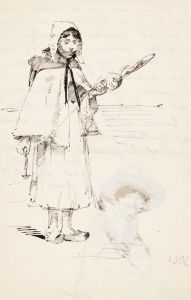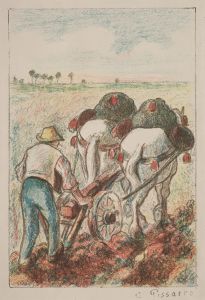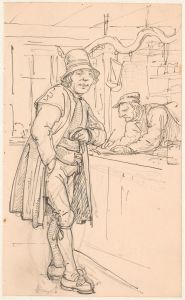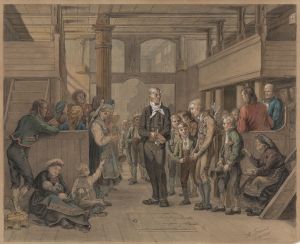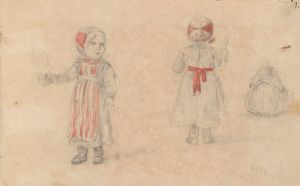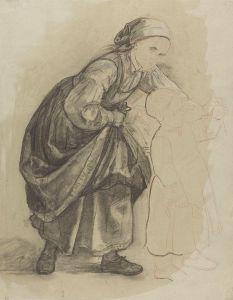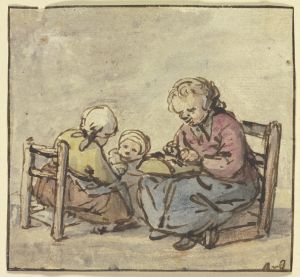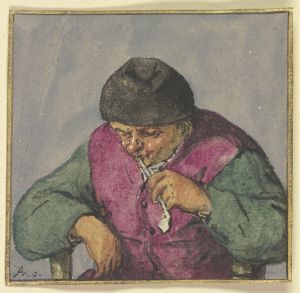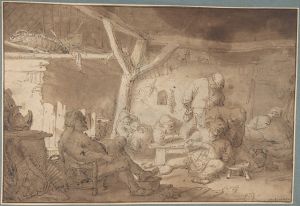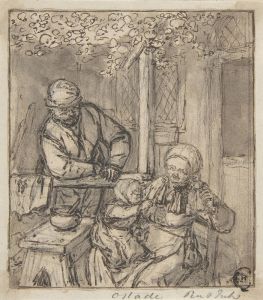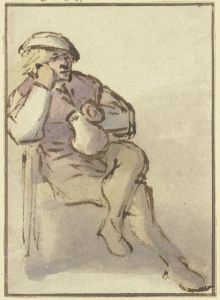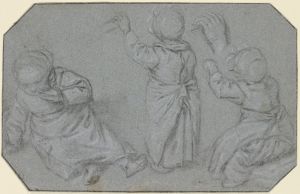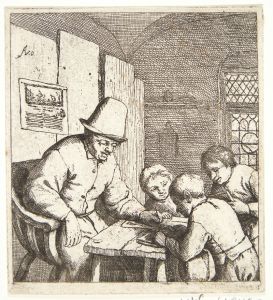
Dancing Couple
A hand-painted replica of Adriaen van Ostade’s masterpiece Dancing Couple, meticulously crafted by professional artists to capture the true essence of the original. Each piece is created with museum-quality canvas and rare mineral pigments, carefully painted by experienced artists with delicate brushstrokes and rich, layered colors to perfectly recreate the texture of the original artwork. Unlike machine-printed reproductions, this hand-painted version brings the painting to life, infused with the artist’s emotions and skill in every stroke. Whether for personal collection or home decoration, it instantly elevates the artistic atmosphere of any space.
Adriaen van Ostade's Dancing Couple is a genre painting created in 1663 by the Dutch Golden Age artist. Known for his depictions of peasant life, van Ostade often portrayed lively and detailed scenes of rural festivities, taverns, and domestic interiors. This painting exemplifies his ability to capture the vibrancy and character of 17th-century Dutch peasant culture.
The artwork depicts a jovial scene of a couple dancing in the center of a rustic interior, surrounded by onlookers and other figures engaged in various activities. The setting is a typical peasant tavern or inn, characterized by its earthy tones, wooden beams, and a warm, dimly lit atmosphere. The central figures, the dancing couple, are portrayed with dynamic movement and expressive gestures, showcasing van Ostade's skill in rendering human interaction and emotion. The surrounding figures add to the lively ambiance, with some playing musical instruments, others clapping along, and a few enjoying drinks.
Van Ostade's use of light and shadow is a notable feature of the painting. He employs chiaroscuro to highlight the central figures and create depth within the composition. The warm, golden light emanating from an unseen source enhances the convivial mood of the scene and draws attention to the intricate details of the characters' clothing and expressions. The artist's palette, dominated by earthy browns, reds, and yellows, further emphasizes the rustic and intimate nature of the setting.
The painting reflects van Ostade's interest in the everyday lives of common people, a theme prevalent in Dutch genre painting of the period. His works often combine humor and realism, offering a glimpse into the social customs and leisure activities of the time. While Dancing Couple celebrates the joy and vitality of peasant life, it also demonstrates van Ostade's technical mastery and keen observational skills.
Today, Dancing Couple is housed in the Louvre Museum in Paris, where it is part of the museum's extensive collection of Dutch and Flemish paintings. It remains a significant example of van Ostade's contribution to genre painting and his ability to capture the essence of 17th-century Dutch rural life.





